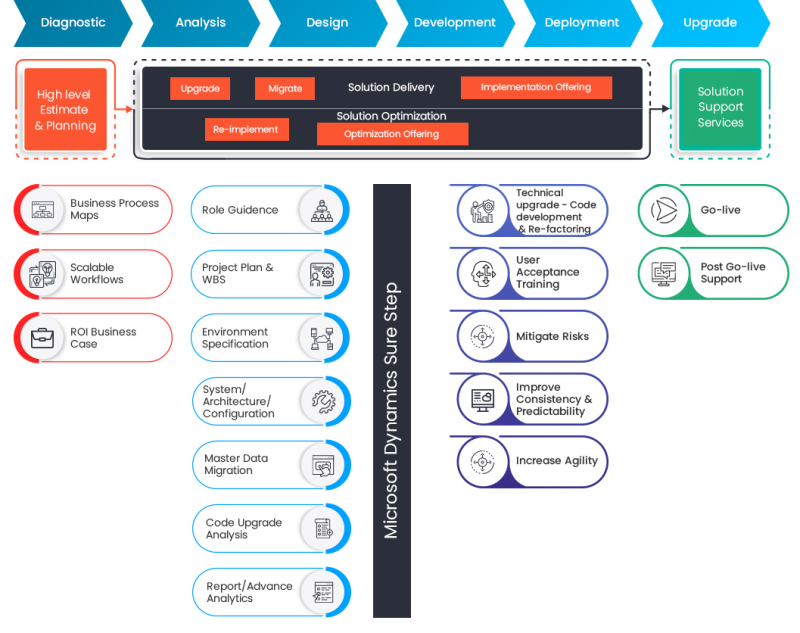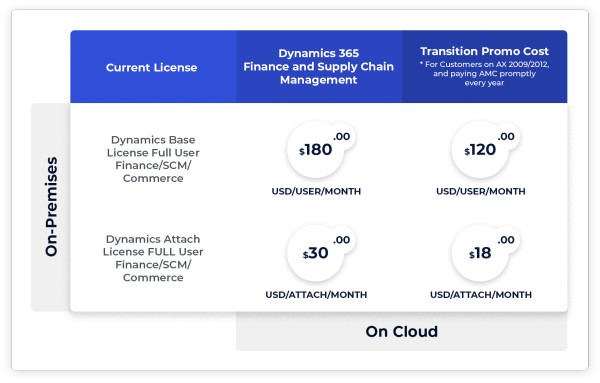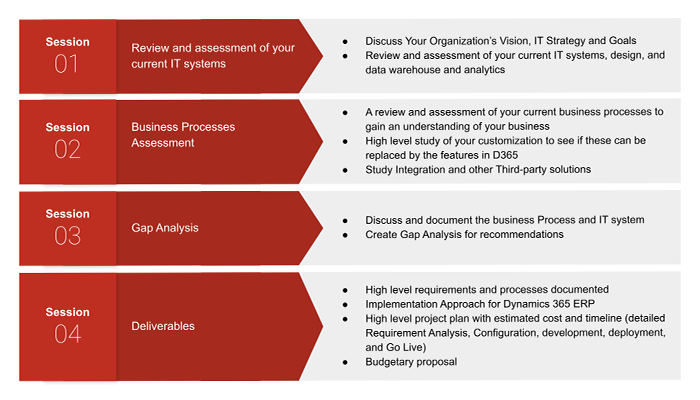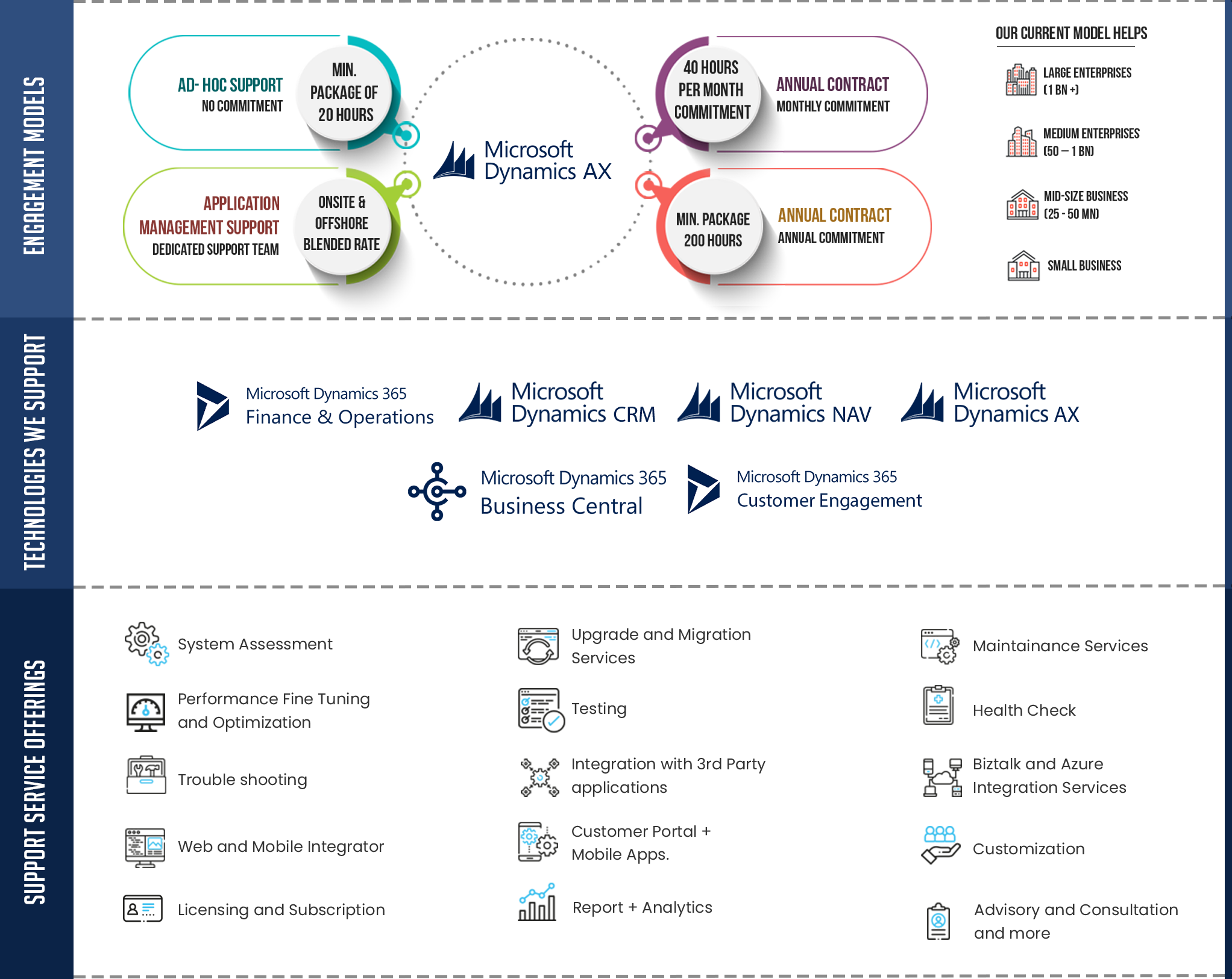1. How do I decide between
moving to Cloud or on-premise version while upgrading from AX 2009 or AX 2012 to
Dynamics 365?
If you are using AX 2009 or AX 2012, your current
infrastructure would most likely not be at par with the latest technology required to
run the On-premise version of Dynamics 365. So, the right decision is to move to the
cloud.
Further, moving to cloud by upgrading to Dynamics 365 Finance and Supply Chain gives
lot of additional benefits such as new cross-platform UI (PC & Mobile, any browser),
real-time BI, ease of access, reduced IT maintenance and upgrades.
2. Our organization uses some
very specialized software applications that interface with our current version of AX.
Will we be able to interface them with the cloud version?
Dynamics 365 can interface data with
external applications using very common authorization mechanisms such as OAuth2 and
data formats like JSON, XML etc.
3. Should we pay for the whole
ERP? We are heavily using only the Financial modules of our current AX version while
the operations are managed by specialized and third party tools
Dynamics 365 can interface data exchange with external applications using very common authorization mechanisms such as OAuth2 and data formats like JSON, XML etc.
4. Will we be able to create
our own BI and visualizations?
Dynamics 365 contains a user-friendly layer of data structure called Data Entities which facilitates easy building of reports and visualizations using Power BI. Dynamics 365 also comes ready with the tools ready to integrate with Azure ML / Azure AI services.
5. When we decide to upgrade,
what will happen to the large number of customization’s / integrations done in AX
2009 or 2012?
The approach to reuse the existing custom
developed functionalities, reports and integration components depends on the
complexity of the customization’s and the impact on the core processes. There are
many functionalities and enhancements built into Dynamics 365 based on the industry
needs. So, custom developed components of the previous versions need not be brought
forward. However, if there are any specific developments you would like to be in
Dynamics 365, those have to be developed. Most of the integrations may have to be
reworked as Dynamics 365 uses OData connections, RESTful web services, JSON, DIXF.
There are many ISV solutions which might also be looked at for fulfilling your
integration/customization needs.
6. What are the other benefits
of moving to D365?
Microsoft has done lot of functional
enhancements and capabilities in many processes based on their R&D Dynamics 365
provides Real-time Business Intelligence, an in-memory BI solution that provides real
time picture of how your business is performing, with new tools like Power BI for
visualizing this data by creating dashboards for various business functions.
Lot of Platform innovations are also introduced by Microsoft so that you can take
advantage of many new capabilities of Microsoft cloud, which includes common data
model, now called Dataverse with Dynamics 365 and Office 365, you can use PowerApps
for easily creating mobile apps, and Microsoft Flow for easily creating workflows,
notifications etc.
7. Is Dynamics 365 only
available in Cloud? We prefer On-Premise due to our compliance and statutory
requirements.
Dynamics 365 has an on-premise version
like previous versions of AX 2009 or 2012. With an on-premises deployment, existing
data center investments can be leveraged and also, they can meet the regulatory and
compliance needs, comply with data sovereignty rules in regions where there are no
Azure Data Centers. However, some connectivity is required for system management and
updates which are enabled through Microsoft Dynamics Lifecycle Services (LCS), a
cloud-based application lifecycle management service.
Following are the requirements when On-Premise deployment is opted for.
- Configure your own high-availability and disaster recovery solutions.
- Stand up sandbox environments.
- Manage your own infrastructure, including scheduling operating system updates.
The additional costs to deploy and manage these capabilities might lead to higher
infrastructure costs resulting in a higher Total Cost of Ownership (TCO). Tools for
deploying Dynamics 365 and updates will be available to partners and customers via
Lifecycle Services. However, unlike the cloud version, Advanced Analytics and Azure
Machine Learning capabilities are not included in the on-premises deployment option.
8. What will be the cost of
Dynamics 365 upgrade and the related timelines?
The cost and timelines depend on your
current AX system customizations, 3rd party integrations and modules implemented etc.
To make a decision on upgrade, it is better to do a detailed analysis which includes
a thorough study of your current processes and requirements on reporting and
integration with other applications.



